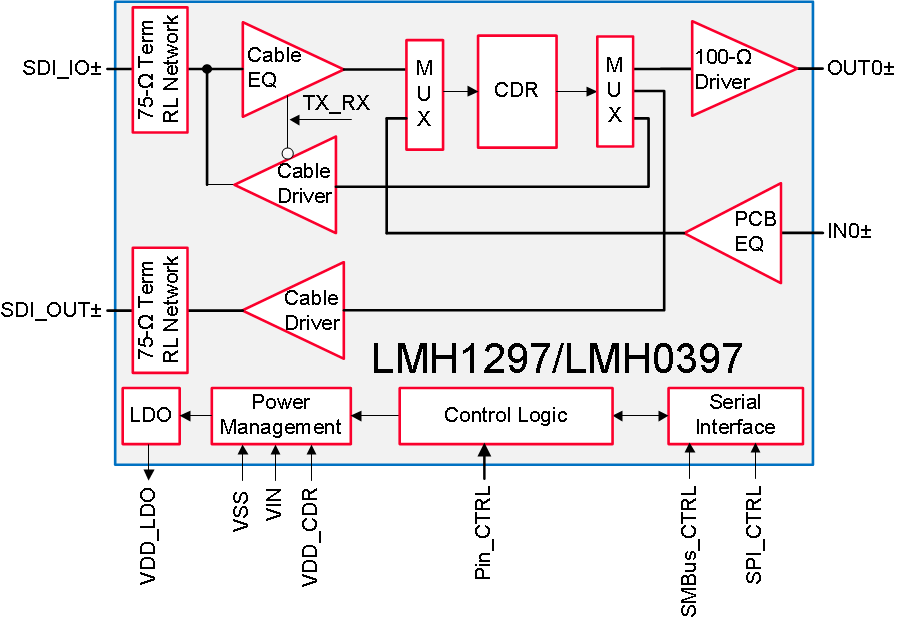SNLA299 August 2018 LMH0324 , LMH0397 , LMH1208 , LMH1218 , LMH1219 , LMH1297
-
LMH12xx MADI Compatibility Application Note
- Trademarks
- 1 MADI Specification Requirements
- 2
LMH12xx Device Family
- 2.1 LMH12xx Device Family
- 2.2 LMH1218 Device Family Hardware Changes to Support MADI Compatibility
- 2.3 LMH1219 Device Family Recommended Register Settings
- 3 Summary
- 4 References
2.1 LMH12xx Device Family
The LMH1297 and LMH0397 device families are 75-Ω bidirectional IOs, which means the devices can be configured either as adaptive cable equalizers or as dual cable drivers. When the user configures one of the devices as an adaptive cable equalizer, there is an additional loop-through port that can be used as an SDI or MADI cable driver, if needed. The LMH1297 device family can be controlled either through a register or pin. Through register control, the cable driver output amplitude can be controlled in 5-mV resolution or per step. Figure 4 shows these configurations.
 Figure 4. LMH1297/LMH0397 Block Diagram
Figure 4. LMH1297/LMH0397 Block Diagram